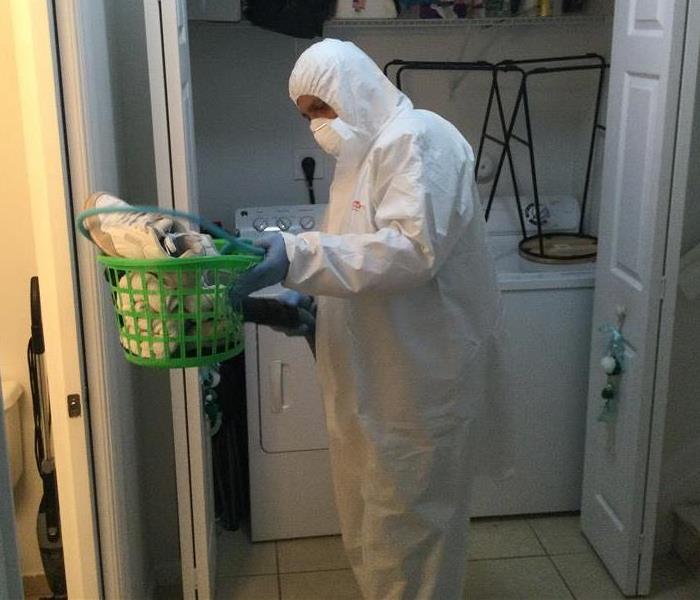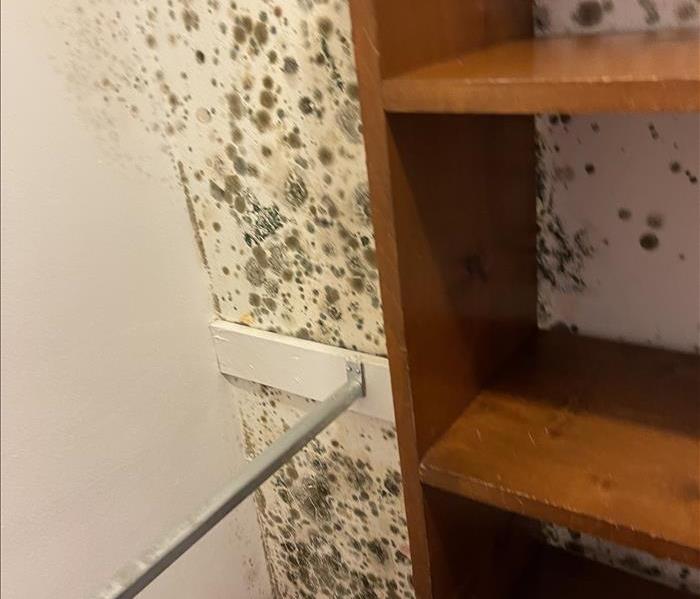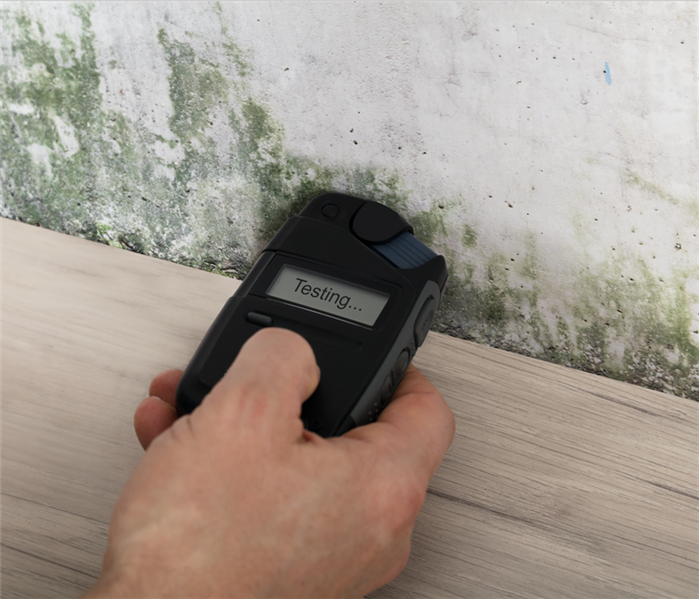Archived Mold Remediation Blog Posts
The Mold Menace: Understanding, Preventing, and Remedying Mold Infestations
3/8/2024 (Permalink)
 Technician Inspectind affected wall
Technician Inspectind affected wall
Mold – it’s a four-letter word that strikes fear into the hearts of homeowners and renters alike. Not only can it damage property and possessions, but it can also pose serious health risks. In this comprehensive guide, we'll delve into the world of mold, exploring its causes, prevention strategies, and effective remediation techniques. ### Understanding Mold: Mold is a type of fungus that thrives in moist environments. It reproduces by releasing spores into the air, which can then settle on surfaces and begin to grow under the right conditions. Common indoor molds include Aspergillus, Penicillium, and Stachybotrys chartarum (black mold). ### Causes of Mold Growth: Mold requires three main ingredients to thrive: moisture, warmth, and organic matter. Leaky pipes, roof leaks, high humidity levels, and poor ventilation can create the ideal environment for mold growth. Areas with poor air circulation, such as basements, bathrooms, and attics, are particularly susceptible. ### Signs of Mold Infestation: Recognizing the signs of mold early on is crucial for preventing extensive damage and health issues. Common indicators of mold infestation include: - Musty odors- Visible mold growth on walls, ceilings, or floors- Water stains or discoloration- Peeling or bubbling paint- Allergic reactions such as sneezing, coughing, or watery eyes ### Prevention Strategies: Preventing mold growth requires diligent maintenance and proactive measures. Here are some tips to keep mold at bay: 1. **Control Moisture Levels:** Repair leaks promptly, use exhaust fans in bathrooms and kitchens, and maintain proper indoor humidity levels (ideally between 30-50%). 2. **Improve Ventilation:** Ensure adequate airflow throughout your home by opening windows, using fans, and installing vents in moisture-prone areas. 3. **Monitor Indoor Humidity:** Use a hygrometer to measure humidity levels and take corrective action if levels are too high. 4. **Use Mold-Resistant Products:** Consider using mold-resistant paint, drywall, and insulation in areas prone to moisture buildup. 5. **Keep Surfaces Clean and Dry:** Regularly clean and dry surfaces prone to moisture accumulation, such as sinks, showers, and windowsills. ### Mold Remediation: If you suspect mold growth in your home, it's essential to take swift action to prevent further spread and mitigate health risks. Here's a step-by-step guide to mold remediation: 1. **Assessment:** Conduct a thorough inspection of your property to identify areas affected by mold growth. 2. **Containment:** Isolate the affected area to prevent mold spores from spreading to other parts of the home. Use plastic sheeting and duct tape to seal off doors, vents, and windows. 3. **Removal:** Remove and dispose of mold-infested materials such as drywall, carpeting, and insulation. Use appropriate personal protective equipment (PPE), including gloves, goggles, and respirators. 4. **Cleaning:** Clean non-porous surfaces with a mixture of detergent and water, then disinfect with a solution of bleach and water (1 cup of bleach per gallon of water). Allow surfaces to dry thoroughly. 5. **Prevention:** Address underlying moisture issues to prevent mold from returning. Repair leaks, improve ventilation, and use mold-resistant materials when possible. Conclusion:Mold infestations are a common and potentially hazardous problem for homeowners and renters. By understanding the causes of mold growth, implementing preventive measures, and taking swift action to remediate infestations, you can protect your property and the health of your loved ones. Remember, when it comes to mold, prevention is key. Stay vigilant, stay proactive, and stay mold-free!
THE SILENT INVADER IN YOUR HOME…
2/14/2022 (Permalink)
 Corner Room with Microbial growth
Corner Room with Microbial growth
Mold is a living organism that belongs to the Fungi family. You are likely to find mold in areas which may be dark and moist such as basements, ceiling tiles, carpet, under sinks and around plumbing pipes. It can cause structural damage to your house when left untreated and undetected.
There are multiple types of mold that can grow in the same areas, some of them are not easy to detect visually without testing being done.
The most common types of mold are Aspergillus; it is usually allergenic mold that can be found on foods and in home air conditioning systems. Cladosporium can be a black or green substance that may grow for example, on the back of toilets, painted surfaces and fiberglass air ducts. And Stachybotrys, or also known as black mold, can be found in wet basements, attics and crawl spaces or any place that has a high moisture level.
Mold can cause health effects....
How to determine that you have mold in your house?
One of the simplest ways to determine that you have mold in your house is if you can see it. Another significant sign is the smell, if you notice that your home has a bit of a moldy smell or if it is an odor that is not common in your home, it might indicate that there may be a mold issue and should be investigated by a hygienist.
How to keep mold out of buildings and homes?
You can correct conditions causing mold by controlling humidity levels such as using your air conditioner, actively using your exhaust/ventilation fans, promptly fixing leaky roofs, windows, ventilating the bathrooms, laundry and cooking areas. Remember to always call a remediation company/hygienist if the affected area is 10 SF or larger. Please don’t hesitate to call SERVPRO of Doral at (305) 594 2956 for guidance regarding any questions or concerns you may have.
What To Know About Detecting Mold
9/17/2019 (Permalink)
 Testing mold in Doral, FL
Testing mold in Doral, FL
Methods To Detect Mold
If you believe you may have mold in your Doral,FL, home. It may be best to contact an indoor environmental specialist in order to confirm your suspicions. Fortunately, these professionals have many ways they can detect mold. Some of those methods may include the following.
1. Mold May Give off an Odor
One way to identify the possibility of mold in home it's by the damp or musty smell mold growth make it off. This is because as a fungus most releases mycotoxins as it grows.Disorder is often one of the first things people notice that lead them to believe baby presenting a problem in their residence.
2. Mold Colonies Can Be Seen
Another way many people can identify mold is by its appearance. When grown in a colony mold spores can be seen. Mold patches may range from white, gray, green, brown, and even black in color, and may present a variety of degrees of fuzziness. If you believe you see mold in your home it's best to contact an indoor environmental specialist.
3. Mold Can Be Tested For
If you believe you may have spores in your home a mold test can be conducted by a local mold remediation professional. The test used may vary by the type of mold suspected. In some cases air samples may be taken, while in others a patch of the surface potentially exposed to mold spores will be removed for testing. If mold is found then the remediation process can begin.
Contacting an indoor environmental specialist can be an important part of detecting any mold that may be in your home. These professionals may be able to locate mold based on odor, if any spore colonies can be seen, and any professional testing they may do. If they do find mold, the remediation process should be able to successfully remove any spores from the residence.






 24/7 Emergency Service
24/7 Emergency Service


